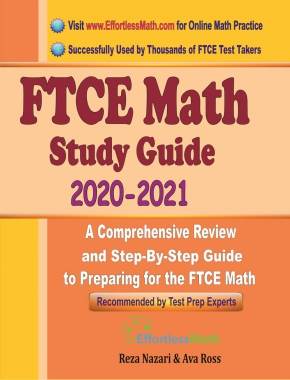A Comprehensive Guide to the Properties of Continuity in Functions
Understanding the properties of continuity allows for a deeper grasp of how functions behave and interact with one another. These properties are rules that continuous functions follow, and they can simplify the process of determining the continuity of more complex functions. Below is a guide to understanding the fundamental properties of continuity.

Step-by-step Guide to Understanding the Properties of Continuity in Functions
Here is a step-by-step guide to understanding the properties of continuity in functions:
Step 1: Grasp the Definition of Continuity at a Point
Before tackling the properties, recall the definition of continuity at point \(c\):
- \(f(c)\) must be defined.
- The limit of \(f(x)\) as \(x\) approaches \(c\) must exist.
- The limit of \(f(x)\) as \(x\) approaches \(c\) must be equal to \(f(c)\).
Step 2: Explore the Arithmetic Property of Continuity
- If functions \(f\) and \(g\) are both continuous at a point \(c\), their sum \(f+g\), difference \(f−g\), product \(fg\), and quotient \(\frac{f}{g}\) (provided that \(g(c)≠0\)) will also be continuous at that point.
To understand this, perform the following steps for any two functions known to be continuous at \(c\):
- Sum/Difference: Verify that \(f(c)±g(c)\) is defined.
- Product: Confirm that \(f(c)⋅g(c)\) is defined.
- Quotient: Ensure \(g(c)\) is not zero and then verify that \(\frac{f(c)}{g(c)}\) is defined.
Step 3: Understand the Composite Function Continuity
- If \(f\) is continuous at \(c\) and \(g\) is continuous at \(f(c)\), the composite function \(g∘f\) (\(g\) following \(f\)) is continuous at \(c\).
For a composite function \(g(f(x))\), do the following:
- Compute \(f(c)\) and check that it is within the domain of \(g\).
- Verify that \(g(f(c))\) is defined.
- If both \(f\) and \(g\) meet the continuity conditions at the respective points, then \(g∘f\) is continuous at \(c\).
Step 4: Recognize the Continuity of Polynomials and Rational Functions
- Polynomials are continuous for all real numbers, so they are continuous everywhere in their domain.
- Rational functions (ratios of polynomials) are continuous wherever they are defined, which means anywhere the denominator is not zero.
To apply this property:
- Identify the domain of the polynomial or rational function.
- For polynomials, affirm that they are continuous across the entire domain.
- For rational functions, verify continuity at all points except where the denominator equals zero.
Step 5: Analyze Continuity with Roots
- If \(n\) is an even number, and \(f\) is a function that is continuous at \(c\) and \(f(c)≥0\), then the function \(\sqrt[n]{f(x)}\) is continuous at \(c\).
For functions involving roots, you should:
- Check that \(f(c)≥0\) (since you cannot take an even root of a negative number and get a real result).
- Verify that \(\sqrt[n]{f(c)}\) is defined.
Step 6: Compute Limits for Continuous Functions
- If \(f(x)\) is continuous at \(c\), then the limit of \(f(x)\) as \(x\) approaches \(c\) is simply \(f(c)\).
This is a direct application of the definition of continuity:
- Replace \(x\) with \(c\) in the function \(f(x)\) to find \(f(c)\).
- Conclude that \(lim_{x→c}f(x)=f(c)\).
Step 7: Utilize Visualization
- Visualizing the graph of a function can significantly aid in understanding its continuity. For any function, try to sketch or use a graphing tool to view its behavior.
- Look for any breaks, jumps, or vertical asymptotes on the graph.
- For continuous functions, the graph should be a single unbroken curve.
By following these steps and utilizing these properties, one can adeptly navigate the concepts of continuity in functions, enhancing the ability to analyze and understand a variety of mathematical problems without the need for extensive calculations or graph plotting every time.
Related to This Article
More math articles
- 3rd Grade NDSA Math Worksheets: FREE & Printable
- How is the ASTB Test Scored?
- Top 10 3rd Grade MEAP Math Practice Questions
- How to Identify Expressions and Equations?
- Best Middle School Math Supplies
- Algebra Puzzle – Challenge 43
- Top 10 PSAT 10 Math Practice Questions
- Conic Sections
- Areas Formed by Function Contours
- How to Identify and Understand the Essential Properties of Squares



















What people say about "A Comprehensive Guide to the Properties of Continuity in Functions - Effortless Math: We Help Students Learn to LOVE Mathematics"?
No one replied yet.